We have selected several “lazy” asanas that you can perform right on your bed before going to bed! They will help you relax and fully enjoy a healthy, proper sleep. Go!
A full sleep is the key to a good mood, well-being, beauty and health in general.
If you get very tired, do not sleep enough, or it is simply difficult for you to disconnect and fall asleep with a sound sleep, then you have come to the right place!
Evening Yoga: Asana No. 1
Sit back on your bed, bend your knees, left hand on your left knee. Place your right ring finger on one side of the nostril, and the big one on the second, touching them lightly, but not pressing hard.
Take a breath and exhale, then close the right nostril with your thumb and take a full breath with your left nostril, counting to four. Then close the left nostril and hold your breath, counting to four. Release your right nostril and exhale, counting to four. Then take a deep breath in your right nostril into four counts, close it and hold your breath for 4 counts. Release the left nostril and exhale in 4 counts.
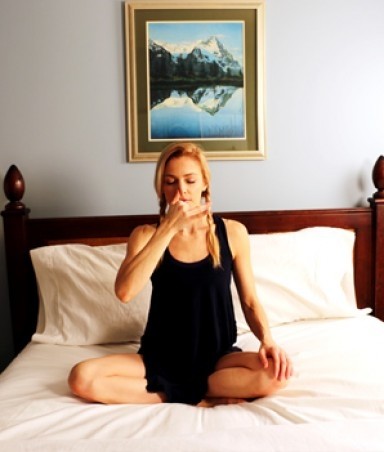
Start the cycle again, and continue until you want to stop. Be sure to exhale through the left nostril during the last cycle. After you complete this exercise, place both hands on your hips, relax them, and take a few deep breaths with both nostrils.
Evening Yoga: Asana No. 2
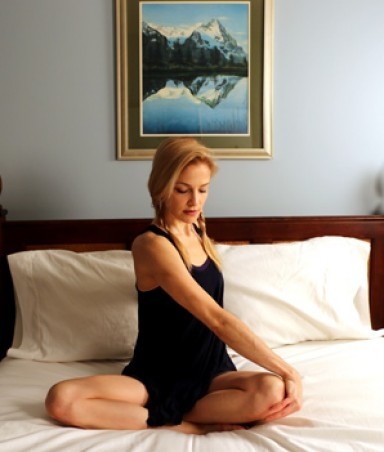
Stay seated, arms relaxed and on both sides. Place your right hand behind your back so that it is at the level of your sacrum. Put your left hand on your right knee. Take a breath and try to stretch your spine. On the exhale, twist the body to the right and in this position take 5-10 deep breaths and exhalations. Repeat on the other side.
Evening Yoga: Asana No. 3

Lie on your back so that your legs are at the head of the bed and rest on the wall. Relax your arms and lay them along your torso. Take 10 deep breaths and exhalations, relaxing as much as possible, and proceed to the next exercise.
Evening Yoga: Asana No. 4
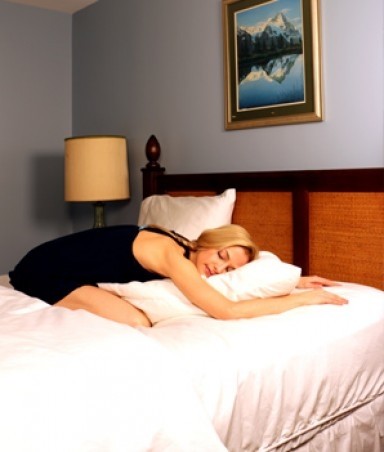
“Baby’s pose” is one of many people’s favorite asanas. Get on your knees and put them wider than your shoulders. Put a pillow between your hips and lie on your stomach. Relax your shoulders, neck and head. Put your hands a little forward and relax them as much as possible. Close your eyes and take 10 deep breaths.
Evening Yoga: Asana No. 5
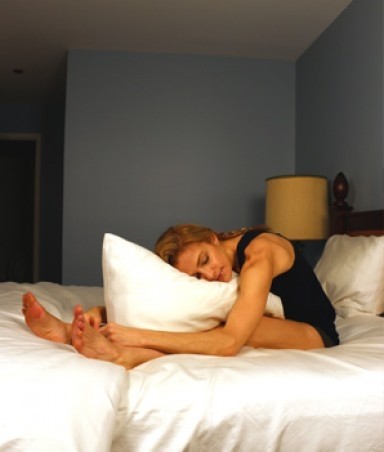
Take a sitting position and straighten your legs. Free up space between them to place a pillow there. Relax your knees, take a deep breath and exhale. As you exhale, begin to lean forward. Lay your torso on a pillow and relax. Stay in that position for 10 deep breaths.
Evening Yoga: Asana No. 6

Lay a pillow (or two) under the back, and lie down so that it supports the head and upper back. When you take this pose, connect the soles together and spread your knees apart. Take 10 deep breaths and exhale and proceed to the last exercise.
Evening Yoga: Asana No. 7
Lie on your back, feet shoulder width apart. Relax your arms and rotate them so that your palms are facing up. Take a deep breath with your nose and exhale with your mouth. Take at least 20 deep breaths.
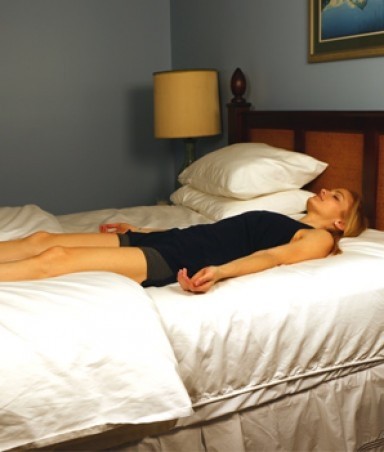
We have shown which asanas will help you relax and set you up for the right sleep. Do it every night to feel good and wake up in the morning vigorous and rested!
Vinyasa Yoga: why breathing is so important during practice
Real yogis have one superpower – they can meditate always and everywhere. During practice, walking through the winter park and breathing in the cold air, doing household chores and distracting for 5-10 minutes in the middle of the heat of the working day. In this they are helped by the practice of vinyasa yoga.
Vinyasa is essentially how you combine performing asanas with breathing. If you have been practicing for a long time, you probably already know that a lot depends on how you breathe during the lesson – the correctness of the asana and how the energy along with the air will circulate through your body. This complex of breath control and asana control is vinyasa. In Sanskrit, the term “vinyasa” literally translates as “stack in a certain order”, which clarifies its meaning.
The simplest and probably already familiar example of vinyasa yoga is Surya Namaskar or Salutation to the Sun. This is a complex of asanas that need to be performed intently and consistently, taking inspirations and exhalations, correctly combining them with movements. Thanks to this “synchronization” the desired effect is achieved – the whole practice takes place in a single stream and turns into meditation in motion. After mastering this super-skill, meditation ceases to be something supernatural and you learn to immerse yourself in the right state under any circumstances – in the line at the store while you wait for your daughter from school and at the lunch break in the office – recharging and replenishing energy reserves for the whole day.

Where to start learning vinyasa yoga? First, you need to remember its basics: you should only breathe through the nose, the length of the inhalation and exhalation should be the same. Another important rule on which we have already emphasized: movements should be combined with proper breathing.
Vinyasa clearly defines how to move, how to breathe and where to look. This creates the conditions for the development of concentration.
To learn vinyasa yoga, beginners are advised to start with the already mentioned Surya Namaskar complex. Performing its classic version, you will quickly learn to own both your body and breath. It is also an excellent preparation for all subsequent asanas.
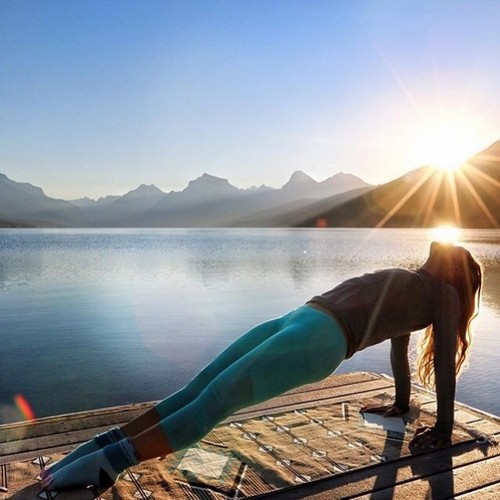
Due to the fact that the complex is quite active and dynamic, all muscle groups warm up and smoothly stretch. Such an effect is precisely the result of the perfect combination of technique and breathing. Therefore, right from the next lesson, make it a rule to keep track of your inhalations and exhalations – you will notice that the way we breathe really matters. And during practice, and in everyday life.



